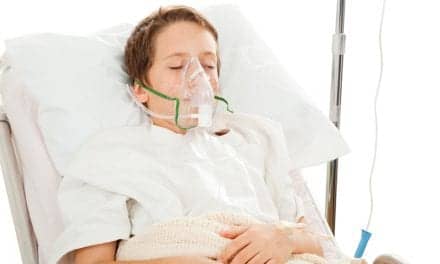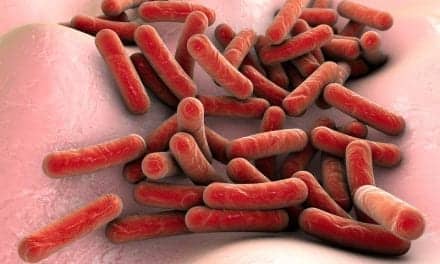Young children diagnosed with pulmonary tuberculosis are at an increased risk of subsequent wheezing, poor lung function, and reduced height and weight later in their childhood, according to a new study published in the American Journal of Respiratory and Critical Care Medicine,
More than 1 million children develop tuberculosis globally each year, and tuberculosis remains among the top 10 causes of pediatric mortality. While there are treatments for children who develop pulmonary tuberculosis, studies haven’t examined the long-term impact of this disease on children’s health after they recover from infection, according to a release by Boston University School of Public Health.
Now, a new study has found that children who develop pulmonary tuberculosis are at an increased risk for health complications later in their childhood. Findings showed that children aged 5 years or younger who developed pulmonary tuberculosis were more likely to subsequently wheeze and have poor lung function and reduced height and weight for their age, even after accounting for preexisting respiratory and growth conditions.
As the World Health Organization calls for increased investments and accelerated global action to end tuberculosis, these latest findings underscore the importance of prevention of tuberculosis in young children to avoid potential long-term health complications as they grow older, according to researchers who say the study is the first to show post-tuberculosis pediatric growth impairment and an association between pulmonary tuberculosis and wheezing or recurrent wheezing after the infection.
“Although there is an effective treatment for tuberculosis in children, there is concern that the impact of tuberculosis may be long-lasting and there could be long-term morbidity even after treatment and recovery,” says study lead and corresponding author Leonardo Martinez, PhD, assistant professor of epidemiology, in a release. “These results suggest that prevention of tuberculosis disease in the first few years of life may have substantial long-term health benefits, in particular to lung health, through childhood.”
For the study, Martinez and colleagues from the Red Cross War Memorial Children’s Hospital in Cape Town, South Africa, the University of Cape Town, and the University of Western Australia followed a cohort of 1,068 children from birth up to 9 years old in two communities outside of Cape Town, from March 2012 to March 2015.
Study senior author Heather Zar, MD, PhD, chair of the Department of Paediatrics and Child Health at the University of Cape Town, says the study leverages a unique opportunity to observe children who were enrolled in the South African Drakenstein Child Health Study, a birth cohort study.
“Given the large burden of childhood TB in low- and middle-income countries, these results are crucial in delineating the burden and morbidity associated with TB illness and in strengthening preventive interventions,” Zar says in a release.
Child growth during the early years of life is critical to avoid stunting and permanent neurodevelopment issues. Children in the study who developed tuberculosis before 1 year of age had a lower weight and body mass index for their age by the time they turned 5 years old, and those who developed pulmonary tuberculosis between 1 and 4 years of age had a lower length for their age.
The researchers found that children who developed pulmonary tuberculosis were at a greater risk of post-tuberculosis wheezing, regardless of when they developed the infection. Children who developed pulmonary tuberculosis before they were six months old had more than double the risk of wheezing after six months, compared to children who did not develop pulmonary tuberculosis. The risk of subsequent wheezing also increased when children developed pulmonary tuberculosis before they were 12 months, 24 months, or 36 months old.
The team also found that pulmonary tuberculosis was associated with lung function impairments that persisted for years after the acute infection and illness.
“By leveraging the unique opportunity of this South African birth cohort study, this study is the first to show that early life TB disease has substantial long-term consequences on child health, including growth, wheezing, and lung function, independent of any underlying impairment. Given the large burden of childhood TB in low- and middle-income countries, these results are crucial in delineating the burden and morbidity associated with TB illness and in strengthening preventive interventions.”
In order to reduce tuberculosis rates, several developments are crucial to ensuring children receive adequate preventative care, Martinez says—such as new vaccines, increased screening for at-risk children, and increased access to current treatments.
“Most children in high-burden settings are not identified by health services before they progress to tuberculosis disease,” he says in the release. “They are found typically because they have presented with TB symptoms and then need to be diagnosed and treated. Identifying children that are likely to develop TB in the future is critical but, at the moment, difficult.”
Preventive treatment regimens are costly and lengthy and therefore difficult for many children to complete, he adds.
“But I am very hopeful for the future of tuberculosis control and, in particular, the control of the pediatric tuberculosis epidemic,” Martinez continues in the release. “There is huge momentum in the field to work together to find new scientific discoveries that are directly relevant to those at risk of or whom have the disease. There is also a large push for a patient-centered approach that includes and listens to survivors of the disease. These and other developments make me hopeful for the direction of our field and the control of tuberculosis in the future.”










